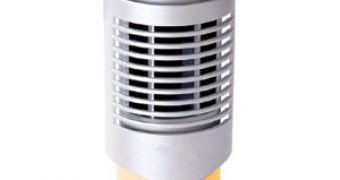Although air purifiers have well developed industry around them and are generally required by patients suffering of asthma and allergies, scientific studies often show that most of these devices are not working correctly, and can in fact cause more harm than good. It may seem obvious at first, but air inside a typical house is significantly dirtier than that outside, mostly due to forced air conditioning, elevated levels of moist which can facilitate the growth of mold, or because of allergenic factors such as pets' fur, pollen and other toxic chemicals that may enter through the doors or windows.
Basically, air purifiers have a single role, to clear air of unwanted particles in suspension and leave behind only the gaseous component. There are five types of air purifiers based on the system used.
The first of all implies the use of classic air filters which are usually placed on air vents throughout the house. The filters are made of materials such as foam, cotton, fiber glass, synthetic materials and so on, depending on the particle capturing capabilities. Some filters are ever washable or require constant replacing, due to air flow restrictions which may reduce their efficiency.
Another type of air purifiers are the High Efficiency Particulate Air filters, which can be manufactured of basically any material as long as they achieve a certain standard. Ultra-Low Penetration Air filters, on the other hand, must be able to retain particles less than 0.3 micrometers in size.
The third type of air purifiers use ionizing techniques, meaning that while air atoms usually have neutral charge, an intense electrical field ensures that all air components are ionized either positively or negatively so that they can be collected by the two electrically charged plates of the purifier. Any particles present in the air would gather together, becoming so heavy that they cannot escape the electric field and are filtered out of the air flow.
Ozone generators on the other hand, have a rather similar construction to the ionizing air purifiers, but work by turning oxygen molecules into ozone. Oxygen molecules subjected to a powerful electric field or to bright ultraviolet light break up into oxygen atoms. After exiting the ionizer, most of the atoms will gather to recombine into dioxygen molecules, while as small proportion would in fact recombine into ozone.
Ozone is a toxic gas and highly reactive to substances present in the air, and may create compound much more toxic than ozone itself. Further more, ozone generators can produce nitrogen oxides, which react with most substances in the atmosphere, including ozone.
The ionizers family may also incorporate adsorbents, charcoal filters which attract and capture passing particles through electrostatic attraction or chemical substances which bond with the adsorbent material.
Last but not least, there are the ultraviolet light air purifiers which destroy airborne micro-organisms such as bacteria and viruses by irradiating them with ultraviolet light.

 14 DAY TRIAL //
14 DAY TRIAL //